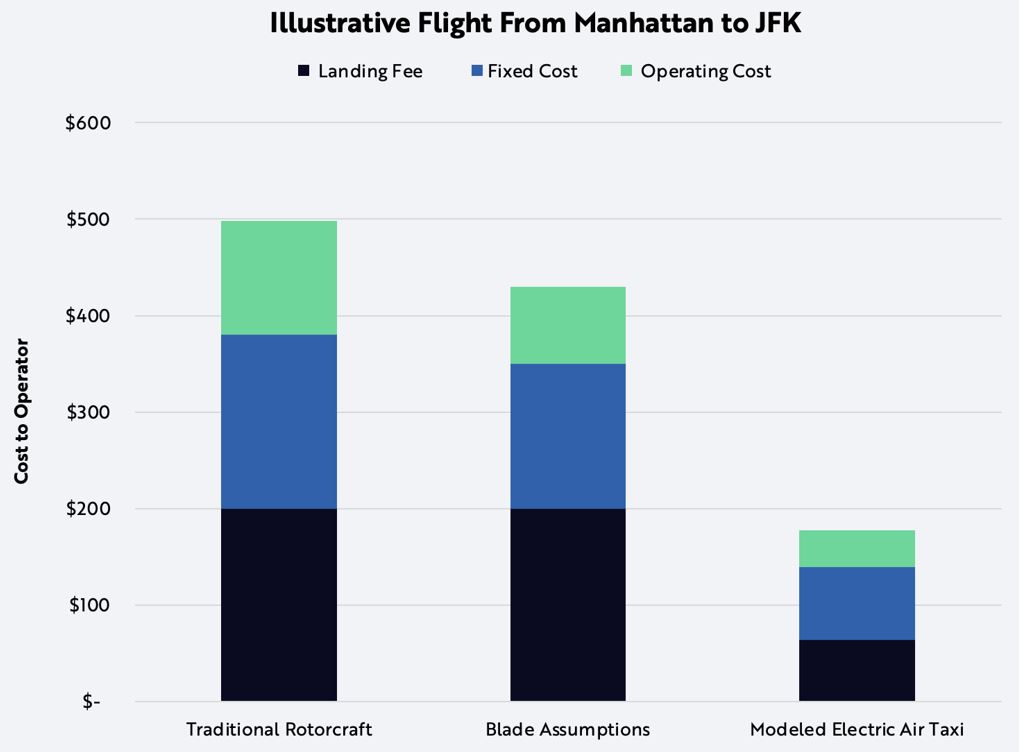
ARK has published its open-source research on the “cost declines likely to propel the electric air taxi industry forward during the next two years and beyond.” In particular it highlights Manhattan to JFK costs falling to USD70 per passenger in the coming decade.
According to a company blog its “initial reference point was Blade Urban Air Mobility, a company with expertise in helicopter operations that estimates electric air taxis initially will lower the cost of a trip from Manhattan to JFK by 14%, from USD500 in a traditional helicopter to USD430. As the technology scales in the coming decade, according to our research, the total cost of an air taxi ride may drop as low as ~USD180, which—when split among three or more passengers—would translate to a price of ~USD70 per passenger.
“According to our research, the primary variables impacting the hourly fixed cost of an electric air taxi are upfront aircraft costs and the number of flight hours per year. Our model assumes that, although high initially, costs will decline as production scales. Joby Aviation has estimated that the upfront manufacturing cost of an electric air taxi averages $1.3 million, while Blade notes that a Part 135 rotorcraft typically operates ~1,000 hours per year. In our view, however, those estimates do not represent the upper limits for electric air taxis, as 2,000 hours would equate to an aircraft utilisation rate of ~23% if operating 24 hours a day 7 days a week.
“Moreover, our research indicates that landing fees—which currently account for ~40% of a helicopter trip cost from Manhattan to JFK—are likely to decline over time for two reasons: an increase in helipad utilisation and lower upfront costs. For perspective, roughly ten years ago, the downtown Manhattan heliport accommodated ~40,000 flights per year at an estimated annual lease cost of USD1.3 million. In our view, the price elasticity of demand for electric air taxis will create a positive feedback loop as lower costs stimulate demand, increasing helipad utilisation. In addition, the infrastructure supporting electric aircraft should cost less than that required for aircraft using liquid fuel.
“Vehicle noise is a potential risk to the acceptance of electric air taxis, and the “not in my backyard” phenomenon could pose challenges to establishing the necessary landing infrastructure for a successful buildout. Community resistance to air taxis could slow price declines and limit demand in urban areas. That said, electric air taxi companies are achieving significant success in lowering noise levels. At a recent air taxi demo, for example, the vehicle was so quiet that participants did not notice it. In ARK’s view, the benefits of affordable, low-emission, alternative air-born transportation will become an imperative for communities, especially if low-cost electric vehicle autonomous taxi networks increase traffic congestion by three-fold during the next five to ten years, as our research suggests.”
For more information
https://github.com/ARKInvest/ARK-Invest-Electric-Air-Taxi-Model
(Image: ARK Invest)

